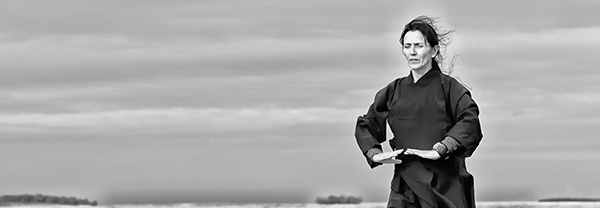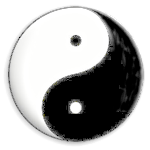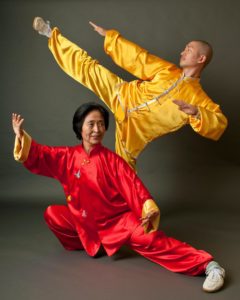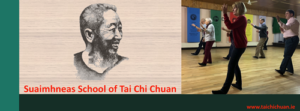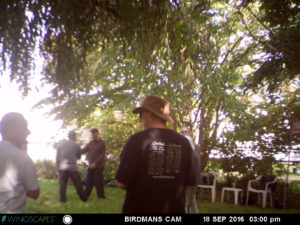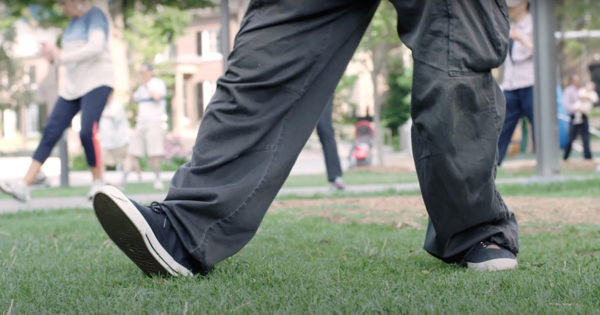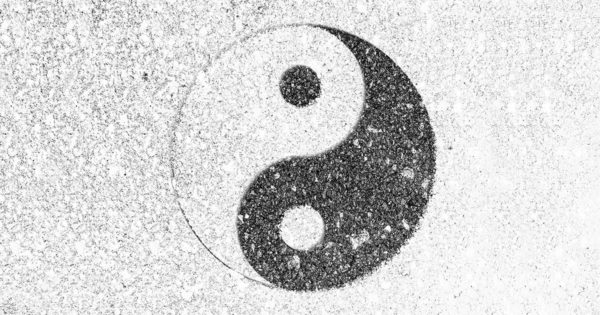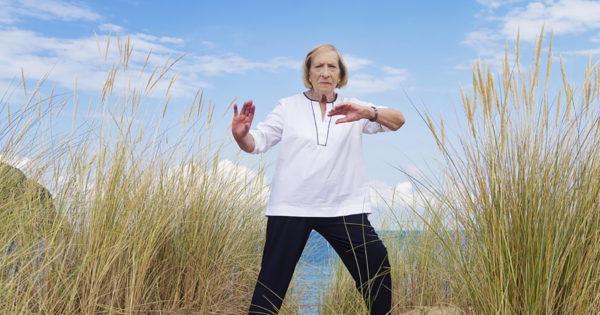Slanted FlyingJournal of Tai Chi Chuan
Training
Natural Diaphragmatic Breathing And Reverse Breathing In Taijiquan
Breathe! We have been breathing every day since birth, so it should be easy to breath properly during Taijiquan (太極拳) practice, shouldn’t it? Well, it’s not so simple. Since breathing is an automatic process, most people have not been taught how to breathe, and many individuals have poor breathing habits (e.g., an estimated 30-50% of modern adults breathe excessively through the mouth, especially during the early morning hours).
There are many different ways that we naturally breathe, depending on the particular situations and our emotional states. There are also special breathing practices that can be used to enhance certain circumstances or produce certain effects.
We breathe differently when we are calm as opposed to being under stress, when we laugh or cry, when we yell or sneeze, etc. Stress breathing, which typically involves shallower, upper chest level breaths, often leads to shortness of breath. This can lead to quickly tiring due to insufficient oxygen, and people under these conditions are often told to take a deep breath to counteract the adverse effects of this inefficient, shallow way of breathing. Taking a deep breath can often also be calming.
The deep breath comes primarily from the movement of the diaphragm and is also called “abdominal breathing” because the abdomen visibly moves out on the inhalation and in on the exhalation. Chest breathing is shallow, using primarily the intercostal muscles of the ribcage, and the abdominal movements are less pronounced. For Taijiquan, “diaphragmatic” or “abdominal” breathing is typically taught.
Some practitioners unconsciously hold their breath when they are concentrating intently on difficult sequences, or when in tense situations while interacting with others. This can lead to hypoxia (insufficient oxygen) and should be avoided if one is aware of doing this. But for the most part our bodies naturally regulate our breathing depending upon the activities that we are engaged in. But we can also consciously control our breathing.
There seems to be no consensus about breathing in Taijiquan, with some teachers advocating letting the breathing come naturally, others advocating strictly coordinating the breathing with movements in the form sequence and others advocating “reverse” breathing or other specialized breathing methods. Reverse breathing, in a highly simplified description, would be having the abdomen go inward while inhaling, and outward while exhaling; the “opposite” of “normal” abdominal/diaphragmatic breathing.
Since different traditions use different breathing methods, I will not advocate for one being right and others wrong. Instead, I will present information from my perspective, and let readers decide for themselves. Sometimes the breathing method for beginners differs from what would be practiced after gaining experience. Sometimes the desired method of breathing depends on one’s goals or intent; whether simply for ease during gentle exercise, for energy cultivation, or for fighting, etc. This article will discuss natural diaphragmatic (abdominal) breathing, coordinated breathing, and reverse breathing.
If practicing primarily for health (calmness, reduced stress, etc.), then however your breathing naturally happens is probably sufficient. For beginners this is also probably the best approach since focusing on the breath can distract one’s attention from other aspects of the art that are being learned. Even so, the use of diaphragmatic/abdominal breathing is likely best. It is also typically recommended that practitioners should have the tip of their tongue lightly touching the roof of the mouth behind the teeth (on the hard pallet).
Even if one is not taught that the tongue connects the Ren Mai and Du Mai (任脈 conception and 督脈 governing meridians) for the microcosmic circulation of energy, this tongue placement also promotes saliva production. Saliva has been shown to promote healthy mouths and digestion. Most schools probably also practice microcosmic circulation, if not specifically during Taijiquan then at least as supplemental qigong (氣功 breath work) exercises.
Different qigong practices can have different breathing requirements; for example, regulating the length of the in-breath relative to the out-breath, sometimes holding the breath or “swallowing” it, breathing in and out through the nose only or alternating between inhaling through the nose and exhaling through the mouth, normal vs. reverse breathing, etc. Unless practitioners use Taijiquan for a specific qigong practice, many of the possible variations will not be encountered, and therefore I will not detail them in this article.
Natural abdominal/diaphragmatic breathing and breathing through the nose is probably sufficient for students during solo forms. Breathing through the nose is thought to be healthier than through the mouth due to the filtering, moistening and warming that occurs, and it allows one to maintain the tongue touching the roof of the mouth. For normal circumstances, this natural breathing is sufficient. More information on the benefits from nose breathing (including 10-20% more oxygen uptake) can be found in a review article by Dr. Alan Ruth here: http://hdl.handle.net/10147/559021
Qigong breathing, of whatever method, can be considered as specialized breathing. An analogy would be breathing for freediving (diving underwater without supplemental oxygen) where the needs require special techniques to optimize one’s existing oxygen supply. Freedivers prepare their bodies for extended periods underwater by inducing both natural physiological responses (e.g., triggering the mammalian diving reflex) as well as methods to purge the lungs of as much carbon dioxide as possible, etc.
